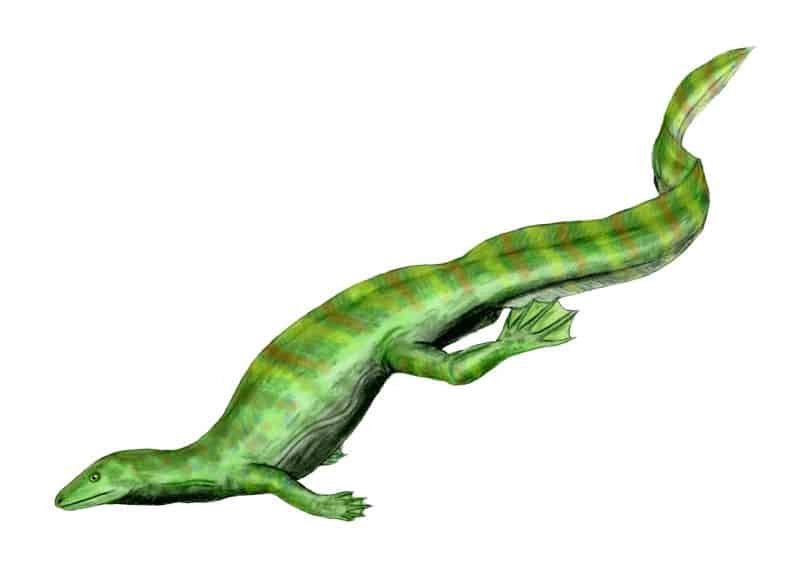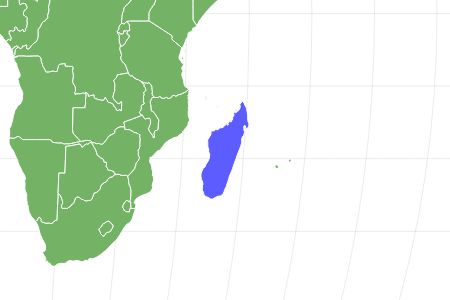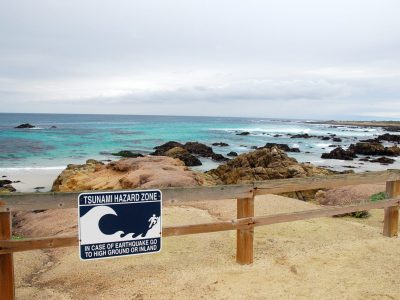Advertisement
Hovasaurus Scientific Classification
- Kingdom
- Animalia
Read our Complete Guide to Classification of Animals.
Hovasaurus Conservation Status
Hovasaurus Facts
- Diet
- Omnivore
Hovasaurus Physical Characteristics
View all of the Hovasaurus images!
Introduction
Hovasaurus is an extinct genus of diapsid reptiles that lived in Madagascar during the Late Permian and Early Triassic Period over 250 million years ago. They were one of the survivors of the Permian-Triassic mass extinction, which is why they made it into the early Triassic Period before going extinct.
The hovasaurus was part of a group known as tangasaurids, which is a branch of early diapsid reptiles located in East Africa and Madagascar. It is theorized that they are the common ancestor of archosaurs and modern lizards that they share many similarities with.
Description & Size
The hovasaurus had a slender body and the appearance of a lizard. The laterally flattened tail was the longest part of their body, making up around two-thirds. They reached a maximum length of 20 inches (50 cm). They were suited for aquatic life and their flat tail was used to propel them through the water.
There have been reports of stones found in the abdomen of the hovasaurus, which indicates that they swallowed these stones to help them sink while they hunted in the water. The special adaptions that made them aquatic were their long, webbed feet which works like flippers to move through the water, and they had an extended caudal vertebra that helped make them fast and agile swimmers.

The hovasaurus was a slender-bodied lizard-like creature.
© – License
Hovasaurus had a large scapulocoracoid and scapula that was part of their chest shield, followed by a small head and wide eye sockets. The hind legs were longer and thicker than the front ones, which likely helped them swim better. The skin impressions of the hovasaurus were reptilian scales found in modern lizards. The ribs of the hovasaurus were heavy and thickened and they were likely fully aquatic creatures.
Diet – What Did The Hovasaurus Eat?
The hovasaurus would swallow stones to help with bouency control in the water, as they would otherwise float to the surface. They would hunt for fish and other small invertebrates in the water which made them carnivores. The hovasaurus were able to adapt to changes made in their environment, which is why they lived for such a long time. Even changes in food sources were not enough to kill off this genus and they were able to live past a mass extinction without an issue.
Habitat – When and Where It lived
The hovasaurus lived during the Late Permian and Early Triassic Periods, and they survived the Permian mass extinction. They lived around 252 to 247 million years ago when they inhabited Madagascar and East Africa. The hovasaurus lived in an aquatic environment, such as a wetland with rivers, lakes, or streams surrounded by vegetation.
Their habitat included an aquatic environment situated north-south of the rift valley and the climate at the time was warm and humid. The hovasaurus likely experienced seasonal rainfall and possible monsoons.
The body structure of the hovasaurus fossils gives us a better indication of their lifestyle, as their webbed feet and long, eel-like tail showed that they were good swimmers. The unproportionate limbs show that they probably didn’t have an easy time walking on land.
They were one of the largest tangasaurids and spent most of their time in freshwater rivers catching fish and swimming. There have been many different fossils that give us an insight into the different life stages the hovasaurus went through, from adults to juveniles.
Each fossil depicts the creature as nearly fully aquatic, but researchers propose that they probably laid their eggs on the land and the hatchlings would later crawl into the water, similar to modern sea turtles. The adults would only return back to land once they had better-developed legs.
Threats And Predators
There are no known threats to the hovasaurus that researchers or scientists have discovered. It is possible that the hovasaurus hatchlings fell prey to other animals if they did not make it into the water in time. This creature could also have been preyed on by larger reptiles and animals since they lacked anything to defend themselves with. The hovasaurus was a predator themselves, preferring to hunt fish and invertebrates in the water.
Discoveries and Fossils – Where It was Found
Hundreds of hovasaurus fossils have been found going through different life stages by scientists. There have been four known genera of hovasaurus found in East Africa and Madagascar. The person who first discovered the hovasaurus is unknown, however, Jean Piveteau was the one to name the hovasaurus genus in 1926. One of the hovasaurus’s known locations is in Madagascar’s lower and middle Sakamena formations where many specimens have been found.
Extinction – When Did It Die Out?
The hovasaurus has been found to be quite hardy and resilient, considering they survived the Permian-Triassic extinction event which was nicknamed “the great dying”. It occurred between the Permian and Triassic geological periods around 252 million years ago. This event was the largest know mass extinction of insects, and it killed over 80% of marine species and genera, along with 70% of terrestrial vertebrates. Somehow, the hovasaurus survived this.
The main reason for this mass extinction that the hovasaurus survived through was due to a large amount of carbon dioxide erupting from the Siberian Traps, this increased global temperatures, and scientists estimated that it took around 10 million years for life on earth to recover from this event.
It is possible that the hovasaurus survived the great dying because they were better adapted to the elevated temperatures. It is also possible that their underwater habitats were stagnant rivers, which means they might have been better adapted to lower oxygen levels, but this is still unclear.
In the end, the hovasaurus died during the Triassic Period, around the beginning to middle of this geological period. The reason for their extinction is unknown, but there are some theories that the marine life that died off during the great dying killed off most of the food sources, while the rise of dinosaurs who were likely predators to the hovasaurus had something to do with their extinction.
Similar Animals to The Hovasaurus
There are some fascinating creatures that resemble the hovasaurus in terms of lifestyle and body structure. They are all diapsid reptiles just like the extinct hovasaurus.
These are the similar animals to the hovasaurus:
- Lizards- A large group of squamate reptiles that inhabit every continent around the world except Antarctica.
- Crocodiles- Large semi-aquatic reptiles that are predators and are closely related to birds and dinosaurs.
- Snakes- Limbless and carnivorous reptiles with elongated bodies.
- Tuatara- Reptiles that closely resemble lizards that are endemic to New Zealand.
Related Animals
View all 104 animals that start with HHovasaurus FAQs (Frequently Asked Questions)
When was the hovasaurus alive?
The hovasaurus lived during the late Permian to the early Triassic Period roughly 252 million years ago. They were aquatic diapsid reptiles that lived in Madagascar and in East Africa. They went extinct towards the end of the early Triassic Period.
How big was the hovasaurus?
The hovasaurus is known for their exceptionally long tail that took up two thirds of their body. The average hovasaurus grew to be 20 inches (50 cm) in length. They had unproportionate limbs, with the hind legs being longer than the front, webbed feet, and a long eel-like tail that made them efficient swimmers.
What did the hovasaurus eat?
The hovasaurus was a carnivore that hunted for fish and invertebrates in freshwater rivers. The abdominal cavities of some hovasaurus fossils have been found with stones in them, which shows that they likely ate them to weigh themselves down in the water to prevent them from floating to the surface. This would of also made it easier for them to hunt close to the bottom of the river without too much struggle with their bouency.
How did the hovasaurus die?
The hovasaurus survived the Permian-Triassic extinction event, but they soon died off in the early Triassic Period for unknown reasons. Their death occurred roughly 252 million years ago.
How many species of hovasaurus is there?
Researchers have found that there are four species of hovasaurus, which is the name of a genus itself. They are the youngest members of the Tangasauridae family, and each species has a morphology that suggests they evolved as aquatic creatures.
Thank you for reading! Have some feedback for us? Contact the AZ Animals editorial team.
Sources
- Wikipedia , Available here: https://en.wikipedia.org/wiki/Hovasaurus
- Prehistoric wildlife , Available here: http://www.prehistoric-wildlife.com/species/h/hovasaurus.html
- Wired Space , Available here: https://wiredspace.wits.ac.za/handle/10539/16296
















